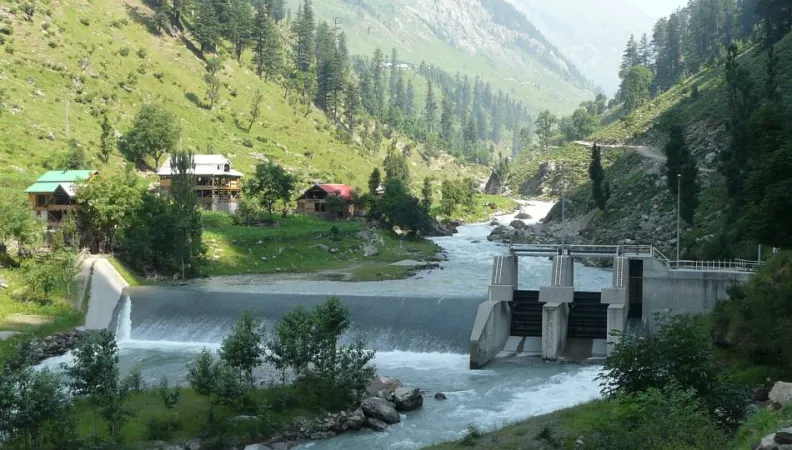Share the page
Increasing Hydroelectric Power Production With The Jaggran II Plant
Project


-
Project start date
-
Status
Ongoing
-
Project end date
-
-
Project duration
-
90 months
-
AFD financing amount
-
€ 68000000
-
Country and region
-
Location
-
Jaggran, Azad-jammu-Kashmir
-
Type of financing
-
Beneficiaries
-
Government of Azad Jammu & Kashmir , Power Development Organization (PDO)
The Pakistani authorities are facing a crisis of sustainability in the electricity sector. In order to meet demand and reduce the country's dependence on oil prices, this project calls for the construction of the 48-megawatt Jaggran II run-of-the-river hydroelectric power plant.
Context
Northern Pakistan has a significant, identified potential for hydropower generation but low installed capacity: just 12% of an identified potential of 54,000 MW is equipped with power generation infrastructure. These fall into three categories:
- Large dams (including Tarbela and Mangla): These are primarily agricultural. As a result, power production is variable and depends on crop water needs.
- Fast-flowing hydroelectric power plants: Pakistan has three (recent or recently rehabilitated) facilities of this type.
- Small and medium run-of-the-river power plants.
The Pakistani authorities are looking to promote a strategy aimed at developing the national potential to meet part of the unmet demand and reduce the country's dependence on oil prices.
Description
The project is simple in its design and has already been tested in the same area with the Jaggran-I project. It consists of: a low-level run-of-the-river dam, with two radial valves to take care of the excess flow during high water periods, an ecological valve for the instream flow and free overflow in case of floods; a water intake at the dam; a water intake tunnel of a 3.85 km length and a diameter of 4 m; a surge chamber to avoid "water hammers" (hydraulic overpressure in the event of valves closing downstream); penstocks along a 220 m vertical drop; a hydroelectric surface plant with 4 Pelton turbines of 12 MW each; a mechanism for discharging turbine water into the river downstream; a substation and the necessary transformers; the high-voltage (132 kV) power transmission line for connection to the PESCO (Peshawar Electric Supply Company) grid that serves Muzaffarabad. The project is expected to produce 212 GWh of electricity annually.
Impacts
- Increasing the country's hydroelectric power generation and restoring continuous distribution to the Muzaffarabad (AJK) area
- Contributing to the economic development and improvement of the living conditions of Pakistani Kashmir's inhabitants
- Producing renewable, non-carbon emitting energy that helps to capitalize on Pakistan's huge hydropower potential
- Supplying the country with electricity that is particularly low in cost, compared with thermal alternatives
- Reduce the country's import bill for petroleum products;
- Creating local jobs (construction and operation of infrastructure)
- Capacity-building of the local HEB hydropower agency, in addition to the technical assistance financed by AFD (CPK 1026).


